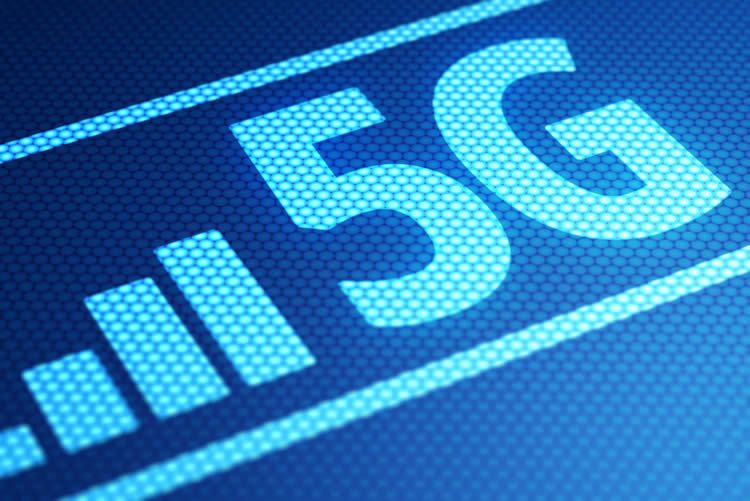
The battle of 5G vs fibre is underway in the UK, but does this mean the end for cable internet?
As 5G rolls out across the UK, access to high-speed wireless internet connectivity – wherever you live – has become more of a reality. But with wired broadband fibre internet hitting faster speeds than ever and with greater coverage, can 5G broadband really spell the end of a physically connected internet?
According to Ericsson, there were 2.1 billion subscribers to 5G networks by the third quarter of 2024, with 6.3 billion (accounting for 67% of all mobile subscriptions) predicted by 2030.
Yet the answer could be that we’ll use a little bit of both fibre and 5G.
What is 5G broadband?
5G broadband is a way of bringing internet to your home using the same core tech as how you bring it to your smartphone, but with a router in place of a phone.
So, your 5G broadband router has a SIM card in it, which allows it to pick up 5G signals wirelessly, just like a 5G phone. But then it beams those signals out as a Wi-Fi network that all your devices can connect to.
That’s fundamentally different to conventional broadband, which relies on cables to bring internet to your router.
There are upsides and downsides to each approach, and which is best for you will largely depend on what kind of wired broadband you have access to, and whether you have a 5G signal at home.
The last mile bottleneck in fibre
Currently, the ‘last mile’ of a standard broadband connection is the most problematic, and the main reason 5G broadband often has the edge.
The ‘last mile’ is used to describe the cables running from a broadband cabinet on the street to your home. In many cases, while the cables to the cabinet will be fibre, the cables from there to your home will be copper, as it can take a lot of work and money to fit high speed fibre optic cable from that cabinet to an individual property.
These copper cables prove to be a bit of a bottleneck when it comes to potential broadband performance. While major providers like Virgin and BT are rolling out more Fibre To The Premises (FTTP) cabled internet, this isn’t expected to offer nationwide coverage until 2033.
Since 5G broadband doesn’t rely on this cabling, it provides a faster option for many people who only have access to Fibre To The Cabinet (FTTC).
Exact speeds vary, but according to a September 2024 Opensignal report, average 5G download speeds range from 80.1Mbps on O2 to 208.9Mbps on Three, while peak speeds can approach 1Gbps.
FTTC for comparison offers speeds of between 40Mbps and 80Mbps according to Thinkbroadband, so that’s a lot slower. However, FTTP can be even faster than 5G broadband, with speeds that can reach or even slightly exceed 1Gbps, and unlike 5G, it can more consistently and reliably reach those speeds.
5G versus fibre at a glance
|
Parameter
|
5G
|
Fibre
|
|
Tech
|
Radio waves over the air
|
Light transmitted through optic cables
|
|
Theoretical speed
|
20Gbps down, 10Gbps up
|
100Gbps
|
|
Typical speed
|
80-210Mbps
|
40Mbps-1Gbps
|
|
Reach
|
300 metres
|
70kms
|
|
Response time
|
Slower than Fibre
|
Faster than 5G
|
|
Last mile rollout
|
Fast rollout
|
Expensive and slow
|
|
Cost to you
|
Cheaper than fibre
|
Higher than 5G
|
|
Installation cost
|
Low
|
Higher
|
|
Operational cost
|
Five times higher
|
Lower than 5G
|
5G is more consistent than fibre
The fastest fixed broadband packages are often restricted to cities, large towns and big businesses. The logistics of hooking up premises with fibre connectivity means that more remote or sparsely populated areas often have to make do with sub-par broadband.
5G's speeds may only match rather than exceed those of the current top-end fixed broadband speeds, but only 11% of the UK currently enjoys average speeds of 300Mbps or higher, according to a September 2023 report from Ofcom, and 7% of consumers are still getting average speeds of lower than 30Mbps. As of March 2023 the median average download speed in UK homes was 69.4Mbps.
That data is a bit old now, but a newer August 2024 report from Uswitch found that the median average download speed was 73.21Mbps, so not much faster than the figure above.
With 5G speeds averaging between 80.1Mbps and 208.9Mbps according to an Opensignal report above, it should consistently be able to beat that 73.21Mbps median average.
5G can be cheaper
The benefits of 5G broadband, or 5G FWA (Fixed Wireless Access), over fixed broadband aren’t purely about speed. Another major benefit to 5G is its low cost.
There’s no need to arrange for an engineer to physically hook your house up with high-speed cabling. Nor will providers need to pay large civil engineering costs for things like digging up roads to lay cabling down. In fact, it’s estimated that 5G will cost operators half as much to deploy.
The 5G solution is also plug and play – as easy as plugging in a wireless router. 5G companies are able to post these out with instructions for self-installation rather than paying an employee to visit, as is the case with the fixed broadband offerings from BT, Sky and Virgin.
Those savings are in large part passed on to you, the customer. Ovum predicts that 5G will be able to save families an estimated £240 per year on line rental costs alone.
Contract lengths are also sometimes shorter, as operators don’t need to recoup any installation costs. The ability to change more often should provide a more competitive broadband landscape.
Fixed broadband is less costly to maintain
One major advantage of fibre over 5G broadband is the cost to maintain that infrastructure. The operational infrastructure cost to have 5G up and running could be as high as five times that of fixed fibre.
This needs to be balanced against the lower capital expenditure of 5G broadband, as mentioned above. But there’s another factor that makes 5G broadband a worthwhile investment for operators.
5G and the mobile factor
While 5G broadband is quite expensive for network operators to maintain, any investment into it will benefit more than just 5G broadband.
The infrastructure that 5G broadband uses - those small cell transmitters that are increasingly being dotted all around our cities, along with larger masts - is the exact same infrastructure that forms the basis of 5G mobile networks.
This means that any investment in 5G broadband is an investment in 5G generally. This is important as a more widely covered area can help to fix issues in that last connection leg, which 5G can struggle with, at least compared to FTTP. Matthew Howlett, an analyst from Assembly Research commented: “The problem with the final leg still being wireless is easily illustrated by the problems people have with existing Wi-Fi. People often find they cannot cover their whole home without additional wireless repeaters.”
“In the worst-case scenario, a double decker bus could park between you and the lamp post across the street. Full-fibre into the building technically gives a much better experience and avoids the variables that 5G cannot always overcome.”
Why hasn’t mobile broadband replaced fixed broadband already?
Given the huge benefits to a mobile network-based broadband service, you might wonder why we haven’t seen one widely replace fixed broadband already.
The simple answer is that none of the mobile network generations have been up to the task. Right up to and including 4G, mobile networks have been slower than their wired counterparts, with significantly lower capacity and higher latency (slower response times).
It’s also worth noting that 4G broadband has actually played a useful role in certain countries with a poor broadband set-up, such as in Italy. In countries such as the UK, where fibre connections are much more numerous, there simply hasn’t been the same call for it.
While 4G was capped on data limits, this isn’t the case for 5G where those limits have largely been abolished. According to Statista, the average monthly data use for broadband in the UK was 535GB in 2023, and that figure has likely grown given that it was 482GB in 2022.
So 5G broadband lacks 4G broadband’s problems, and it’s now available to a growing number of people. So if you’re sick of your broadband it’s worth considering a switch.










